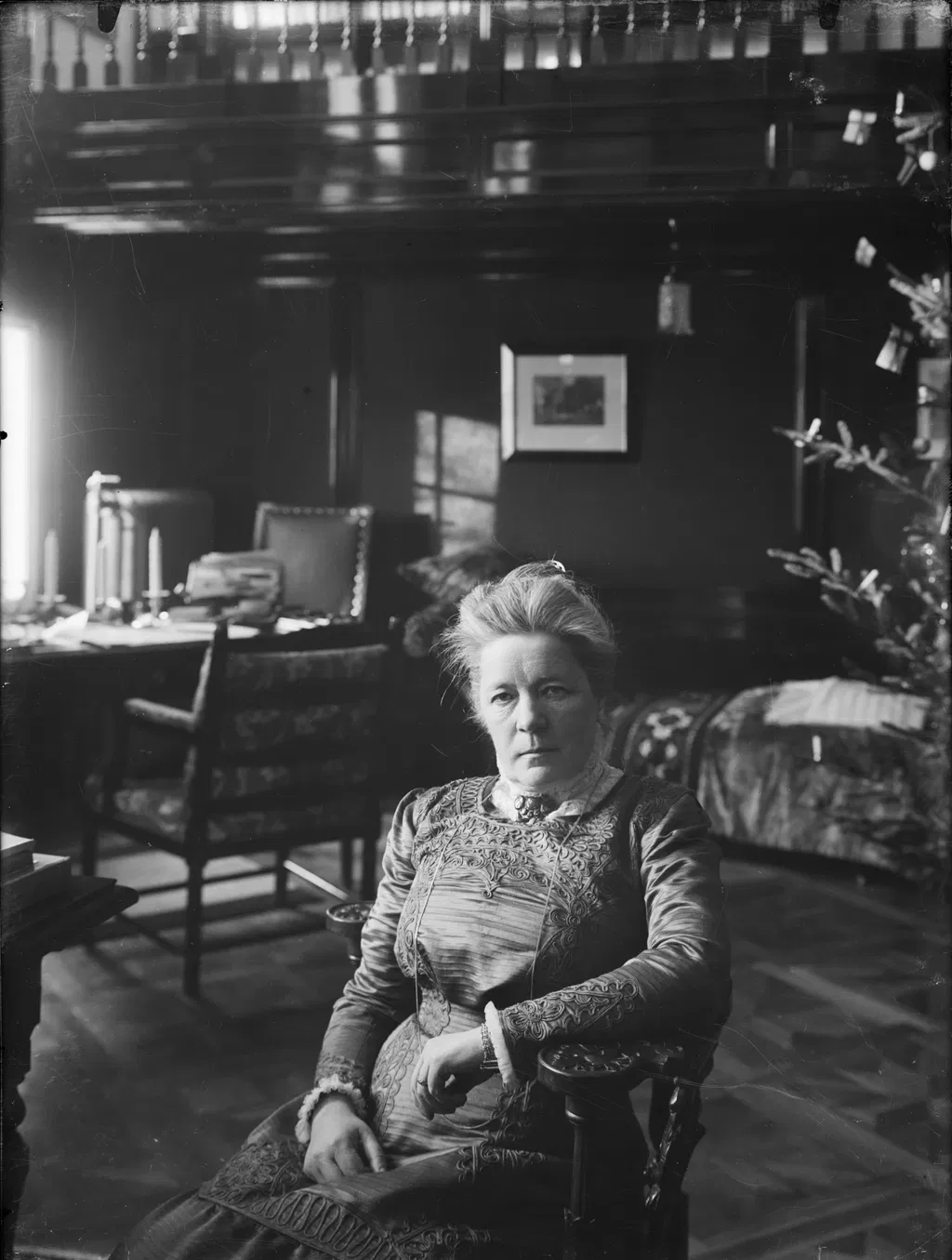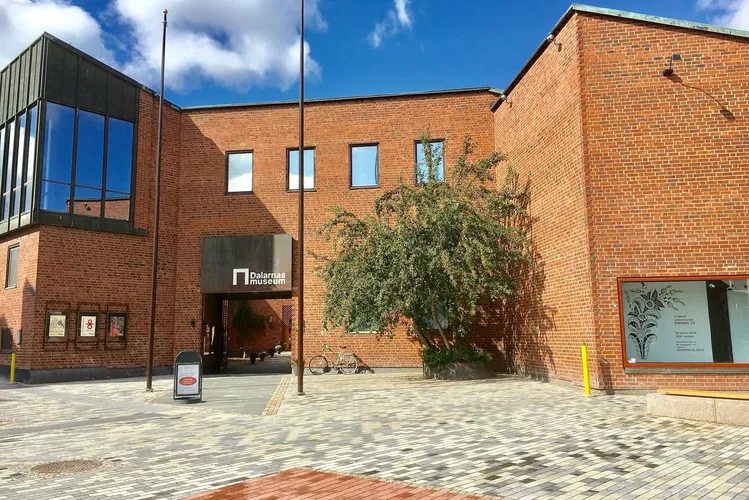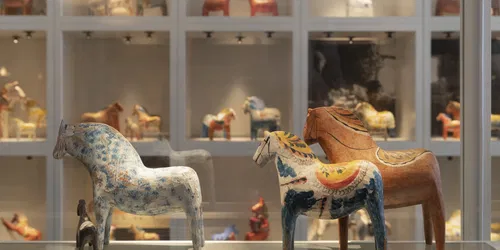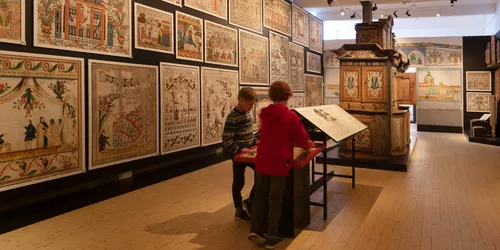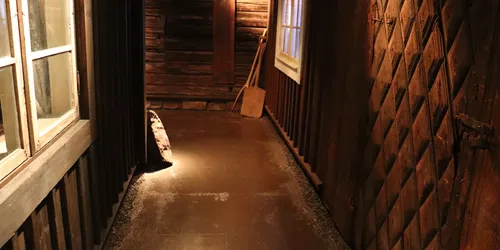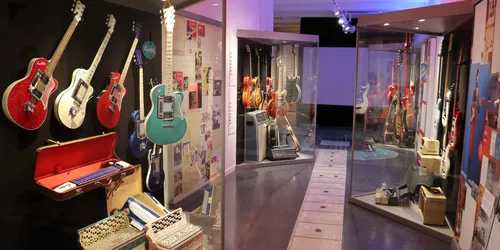Exhibition 'Selma Lagerlöf' in Dalarnas Museum
The veranda door stands wide open, and the hall’s paneling is freshly painted. The dim library is intact, from the heaviest book to the finest paperweight. The room invites tiptoed caution; it feels like you’re disturbing someone’s peace as you step over the threshold. Here, she wrote her great stories.
But outside the library, another Selma is present. The Selma who loved theater and had her own chair in the old theater in Falun. The Selma who indulged in clothes and shoes, ordered hats, and pondered over daily style combinations. The Selma who shrank from social gatherings and often felt out of place in the finer cultural circles. The Selma who was grandly celebrated on her 50th birthday by the schoolchildren of Falun and was made happy by it.
Selma Lagerlöf achieved success as an author in Sweden and abroad during her years in Falun, but she reserved a place in her heart for the rough and outcast. She felt most at home on the mine side of the city, which was barren and treeless, lying in the shadow of the mine. And she had a noticeable fondness for Tisken. The polluted little lake where all the dirt from the stream Falu ån settled and where not even the waterbirds would take their morning dip.
’…I have such a wonderfully warm and quiet study in my villa that it’s a help in my work.’
Selma Lagerlöf lived in Falun from 1897. The villa she bought in 1907 and owned until her death in 1940, located at Villavägen 34-36, is now demolished, but her library and study from there were reconstructed in 1985 in a part of the extension to the Dalarna Museum, which was then completed.
